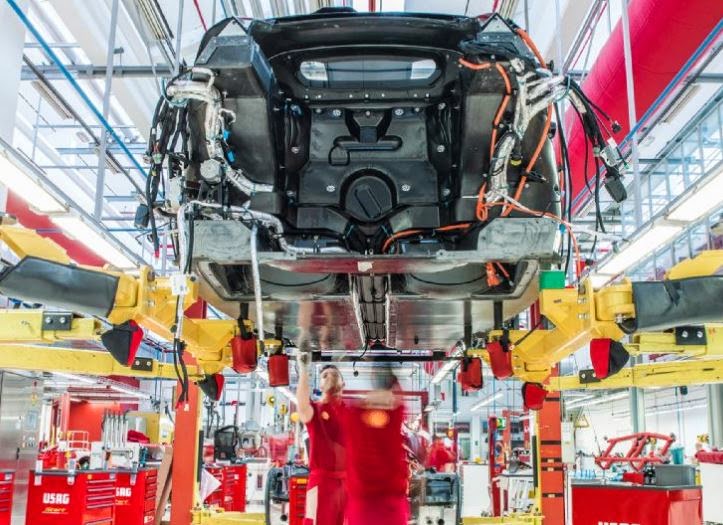The Ferrari LaFerrari hybrid supercar is being hand-built in an
assembly hall on the Ferrari campus in Maranello, Italy, that is usually used
to construct Formula 1 prototype racing cars. Given the amount of F1-derived
technologies and materials used in LaFerrari, this seems entirely appropriate.
By the time we visited the LaFerrari hall, on April 28,
2014, LaFerrari had been in production for some five months. The entire
production run will total only 499 cars, of which 120 are designated for U.S.
customers, and if that doesn’t seem like many, Franco Cimatti, the MIT-educated
engineer who’s in charge of vehicle concepts and pre-development at Ferrari,
reminds us that Ferrari built only 349 F50 supercars and only 399 examples of
the famed Ferrari Enzo. Why only 499 LaFerraris, rather than 500? we ask. “The
‘9’ is to underline the fact that Enzo Ferrari used to say that we should
always build one fewer car than the market will bear,” says Cimatti. And with
only about one LaFerrari being completed on average per work day, “499 cars
works out to about two and a half years. After that, LaFerrari is too old for
such a special car.”
Here's a behind-the-scenes look at the steps involved in
building each car.
Dramatic winged LaFerrari hybrid supercars are almost ready
to leave the production line.
Ferrari technicians at work on the V-12 hybrid powertrain.
Underbody of carbon fiber chassis is coated with Kevlar to
help protect hybrid components from road debris.
The entire carbon fiber body structure weighs only 176 lb.
Seeing red? Even the hydraulic lifts to support the chassis
are painted red.
Red padding and blue plastic protect that chassis from nicks
and dings through the production process.
Red is the classic Ferrari color, sure, but this LaFerrari
in silver and black looks great.
The front end of LaFerrari, before the aerodynamically
optimized splitter and hood are installed.
Not a single wasted millimeter, we were told by Ferrari
engineers. No kidding: look at the powertrain components packed into the rear
of LaFerrari. Silver-colored electric inverters (nestled between pieces of
protective red fabric) lead to the heart of the beast, the 6.3-liter V-12.
Road-going automobile or flying red spaceship? You decide.
Doors and lids that stay open to facilitate production also
create a stunning factory still-life.
At the very rear of its chassis, aft of the V-12 engine and
the seven-speed dual-clutch gearbox, resides the LaFerrari traction/generator
electric motor, here with three orange power cables that will be attached to
electric inverters.
And here are the electric inverters, which reside, somewhat
inelegantly, on top of the dual-clutch transmission.
Giant carbon-ceramic brake rotors by Brembo are standard.
Direct rear view of the LaFerrari carbon fiber chassis as it
is prepared to be married to the V-12 hybrid powertrain.
Bright yellow sleeves protect the brake components as the
chassis moves down the line. F-150 refers to the internal code name for the
LaFerrari project. Yes, everyone at Ferrari is well aware that this is also the
name of the bestselling vehicle in America, a Ford pickup, and they all joke
about it.
Suspension porn, anyone?
The V-12 engine is there, the seven-speed dual-clutch
gearbox is there, and the electric motor is there, waiting expectantly for the
electric inverters to be attached to its orange cables.
source: http://www.automobilemag.com/features/news/1405-building-the-ferrari-laferrari/
by Joe DeMatio
http://www.fzrestoration.com


















No comments:
Post a Comment